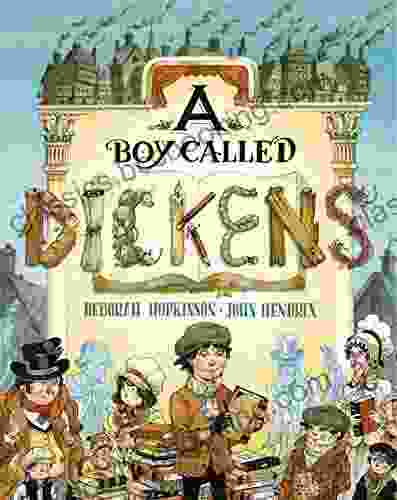Unleash Your Design Potential: The Essential Guide to Design Management with David Kelly's Framework

In today's rapidly evolving business landscape, design has emerged as a critical driver of innovation and competitive advantage. Organizations that embrace design-led thinking are consistently outperforming their peers in terms of revenue growth, customer satisfaction, and employee engagement.
However, implementing a successful design management program requires more than just hiring talented designers. It requires a structured framework that guides the design process from concept to execution, ensuring that design is integrated into the core of the organization's strategy.
In his seminal work, "Design Management: A Guide to Beauty, Usability, and Innovation," David Kelly, the founder of IDEO and one of the world's leading design thinkers, provides a comprehensive framework for managing design effectively. Kelly's framework has been adopted by countless organizations around the globe, helping them to create award-winning products, services, and experiences.
4.3 out of 5
| Language | : | English |
| File size | : | 1284 KB |
| Text-to-Speech | : | Enabled |
| Screen Reader | : | Supported |
| Enhanced typesetting | : | Enabled |
| Print length | : | 40 pages |
In this article, we will explore the key elements of David Kelly's Design Management Framework and provide practical insights on how to apply it to your own organization.
Kelly's Design Management Framework consists of five core stages:
- Inspiration
- Ideation
- Implementation
- Iteration
- Evaluation
These stages are iterative and interconnected, forming a continuous cycle of design and improvement.
The inspiration stage is where the design process begins. It involves gathering insights from users, stakeholders, and the broader market in Free Download to identify opportunities for innovation. This stage is all about understanding the problem that needs to be solved and the needs of the people who will be using the product or service.
Once you have a clear understanding of the problem you are trying to solve, the ideation stage is where you generate and explore different potential solutions. This stage is often characterized by brainstorming, sketching, and prototyping. The goal is to come up with as many ideas as possible, no matter how crazy or impractical they may seem.
The implementation stage is where ideas are transformed into reality. This stage involves developing the product or service, testing it with users, and making necessary adjustments. The goal is to create a solution that is not only functional but also desirable and feasible.
The iteration stage is where feedback from users is used to refine and improve the product or service. This stage is ongoing and should continue throughout the entire design process. The goal is to make sure that the product or service is meeting the needs of users and is constantly evolving to meet changing needs.
The evaluation stage is where the success of the design is assessed. This stage involves collecting data on how the product or service is performing and using that data to make further improvements. The goal is to ensure that the design is meeting its objectives and is delivering value to users.
Applying David Kelly's Design Management Framework to your own organization requires a commitment to design-led thinking and a willingness to embrace a collaborative and iterative approach to problem-solving. Here are a few tips for getting started:
- Start with a clear problem statement. Define the problem you are trying to solve and the goals you want to achieve.
- Involve a diverse team. Bring together people from different backgrounds and perspectives to generate a wide range of ideas.
- Create a safe and supportive environment. Encourage creativity and experimentation by providing a space where people feel comfortable taking risks.
- Use a variety of tools and techniques. There are many different tools and techniques that can be used to support the design process. Experiment with different approaches to find what works best for your team.
- Get feedback early and often. Regularly test your ideas with users to get feedback and make necessary adjustments.
- Iterate and improve. The design process is iterative. Be prepared to make changes and improvements based on feedback and data.
David Kelly's Design Management Framework is a powerful tool that can help organizations create innovative, human-centered designs that drive business success. By embracing a design-led thinking approach and following the five stages of the framework, you can unlock the potential of design and transform your organization into a leader in innovation.
If you are serious about improving your design management practices, I highly recommend reading David Kelly's book, "Design Management: A Guide to Beauty, Usability, and Innovation." This book provides a comprehensive overview of the framework and practical insights on how to apply it to your own organization.
By investing in design management, you are investing in the future of your organization. Design is no longer a luxury. It is a necessity for businesses that want to thrive in the 21st century.
4.3 out of 5
| Language | : | English |
| File size | : | 1284 KB |
| Text-to-Speech | : | Enabled |
| Screen Reader | : | Supported |
| Enhanced typesetting | : | Enabled |
| Print length | : | 40 pages |
Do you want to contribute by writing guest posts on this blog?
Please contact us and send us a resume of previous articles that you have written.
 Book
Book Novel
Novel Page
Page Chapter
Chapter Text
Text Story
Story Genre
Genre Reader
Reader Library
Library Paperback
Paperback E-book
E-book Magazine
Magazine Newspaper
Newspaper Paragraph
Paragraph Sentence
Sentence Bookmark
Bookmark Shelf
Shelf Glossary
Glossary Bibliography
Bibliography Foreword
Foreword Preface
Preface Synopsis
Synopsis Annotation
Annotation Footnote
Footnote Manuscript
Manuscript Scroll
Scroll Codex
Codex Tome
Tome Bestseller
Bestseller Classics
Classics Library card
Library card Narrative
Narrative Biography
Biography Autobiography
Autobiography Memoir
Memoir Reference
Reference Encyclopedia
Encyclopedia Dave Seminara
Dave Seminara Deborah Hopkinson
Deborah Hopkinson David Salomon
David Salomon Deanna F Cook
Deanna F Cook Danielle Y C Mcclean
Danielle Y C Mcclean David V Jervis
David V Jervis Dean Buonomano
Dean Buonomano David Salsburg
David Salsburg David Zarefsky
David Zarefsky David Holt
David Holt David Churchman
David Churchman Dean Koontz
Dean Koontz David L Vance
David L Vance Dave Whitson
Dave Whitson David Faulkner
David Faulkner Dawn Turner Trice
Dawn Turner Trice David E Morine
David E Morine David N Myers
David N Myers David Halberstam
David Halberstam David Hackett Fischer
David Hackett Fischer
Light bulbAdvertise smarter! Our strategic ad space ensures maximum exposure. Reserve your spot today!

 Herb SimmonsUnlock Your Imagination with Cat Kid Comic Club: A Purr-fect Adventure for...
Herb SimmonsUnlock Your Imagination with Cat Kid Comic Club: A Purr-fect Adventure for...
 Miguel NelsonNelson Mandela's Timeless Wisdom: Unlocking Success Through 100 Life-Changing...
Miguel NelsonNelson Mandela's Timeless Wisdom: Unlocking Success Through 100 Life-Changing... Bret MitchellFollow ·13.4k
Bret MitchellFollow ·13.4k Billy PetersonFollow ·2.4k
Billy PetersonFollow ·2.4k Robbie CarterFollow ·15.7k
Robbie CarterFollow ·15.7k Jeffery BellFollow ·17k
Jeffery BellFollow ·17k Francis TurnerFollow ·5.1k
Francis TurnerFollow ·5.1k Ivan TurnerFollow ·14.3k
Ivan TurnerFollow ·14.3k Nathan ReedFollow ·18.7k
Nathan ReedFollow ·18.7k Frank ButlerFollow ·6.7k
Frank ButlerFollow ·6.7k

 Cameron Reed
Cameron ReedHow to Know When Language Deceives You
Unmasking the Power of...

 Robbie Carter
Robbie Carter50 Things To Know About Planning Home Schooling...
: The Power of Hands-On Learning Embarking...

 Julio Cortázar
Julio CortázarCalculus: Single and Multivariable, 8th Edition — The...
Calculus is the...

 Jaime Mitchell
Jaime MitchellBunnicula and Friends: A Spooktacular Tale of Mystery and...
In the quaint little town of Celeryville,...

 Josh Carter
Josh CarterPeppa Easter Egg Hunt: Join Peppa Pig on an...
Get ready for...

 Donovan Carter
Donovan CarterBoy Called Dickens: A Journey into the Childhood of a...
Delving into the...
4.3 out of 5
| Language | : | English |
| File size | : | 1284 KB |
| Text-to-Speech | : | Enabled |
| Screen Reader | : | Supported |
| Enhanced typesetting | : | Enabled |
| Print length | : | 40 pages |








